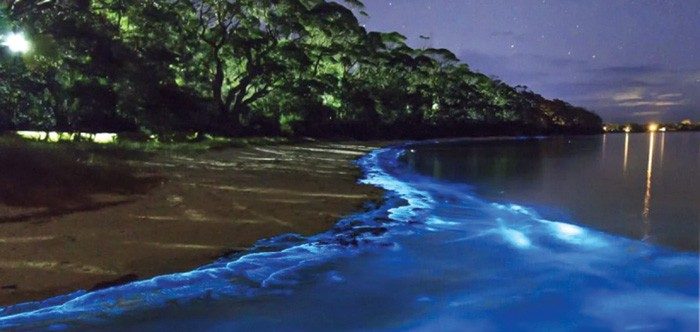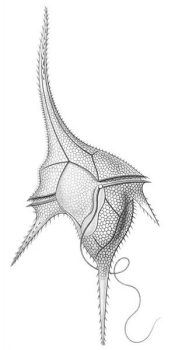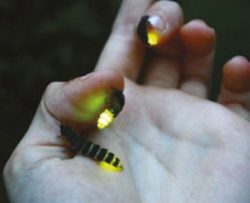By William J. Doria

Imagine yourself swimming in the warm water off the coast of a lovely sandy beach. Suddenly, you are swimming through a beautiful, soft blue glow that seems to come from the water all around you. Could this be real? Believe it or not, this could happen to you if you are in the right place!
It might seem that it is the water itself that is glowing. But instead, the glow is caused by millions of tiny organisms called dinoflagellates that live in the water and sometimes make it glow.
Dinoflagellates are a type of single-celled algae, and each of these tiny creatures emits a small amount of light. There are so many dinoflagellates in the sea that when they all light up at once, the whole surface of the sea seems to give off a color and a view that is a feast for the eyes.

How do they work?
The light is caused by a chemical reaction that happens inside the dinoflagellate. A chemical called luciferin is responsible for the glow. Luciferin is similar to the green chlorophyll in the leaves of plants. Luciferin reacts with oxygen to produce blue-colored light in the ocean. It happens in the presence of an enzyme called luciferase. When the water where dinoflagellates live is disturbed, it triggers a chemical reaction, and they all start to emit blue light.
Each tiny flash of light is really short! It lasts just 0.5 microseconds—only a tiny fraction of a second. But because there are so many blinking on and off at the same time, it brightens the whole surface of the water. We do not notice that the glow is really made up of millions of quick flashes.

The kind of light fireflies emit is a yellow-green color instead of blue.
Why do dinoflagellates behave in this amazing way?
The reason why dinoflagellates give off bright flashes of light is not clearly understood by scientists, but it is probably the organism’s way of defending itself. When a predator swimming close by creates a disturbance in the water, the dinoflagellate reacts by emitting light. One hypothesis is that the flash is enough to scare off the predator and make it stay away.
When a living thing emits light, it is called bioluminescence. You may have never seen dinoflagellates giving off light, but you have likely seen bioluminescence from other organisms! For example, fireflies glow—thanks to a different kind of luciferin in their bodies. The next time you see a firefly twinkling on a summer night, remember you are watching a chemical reaction that is similar to the one in dinoflagellates in the ocean!
William J. Doria is Professor at Rockford University, in Rockford Illinois.

